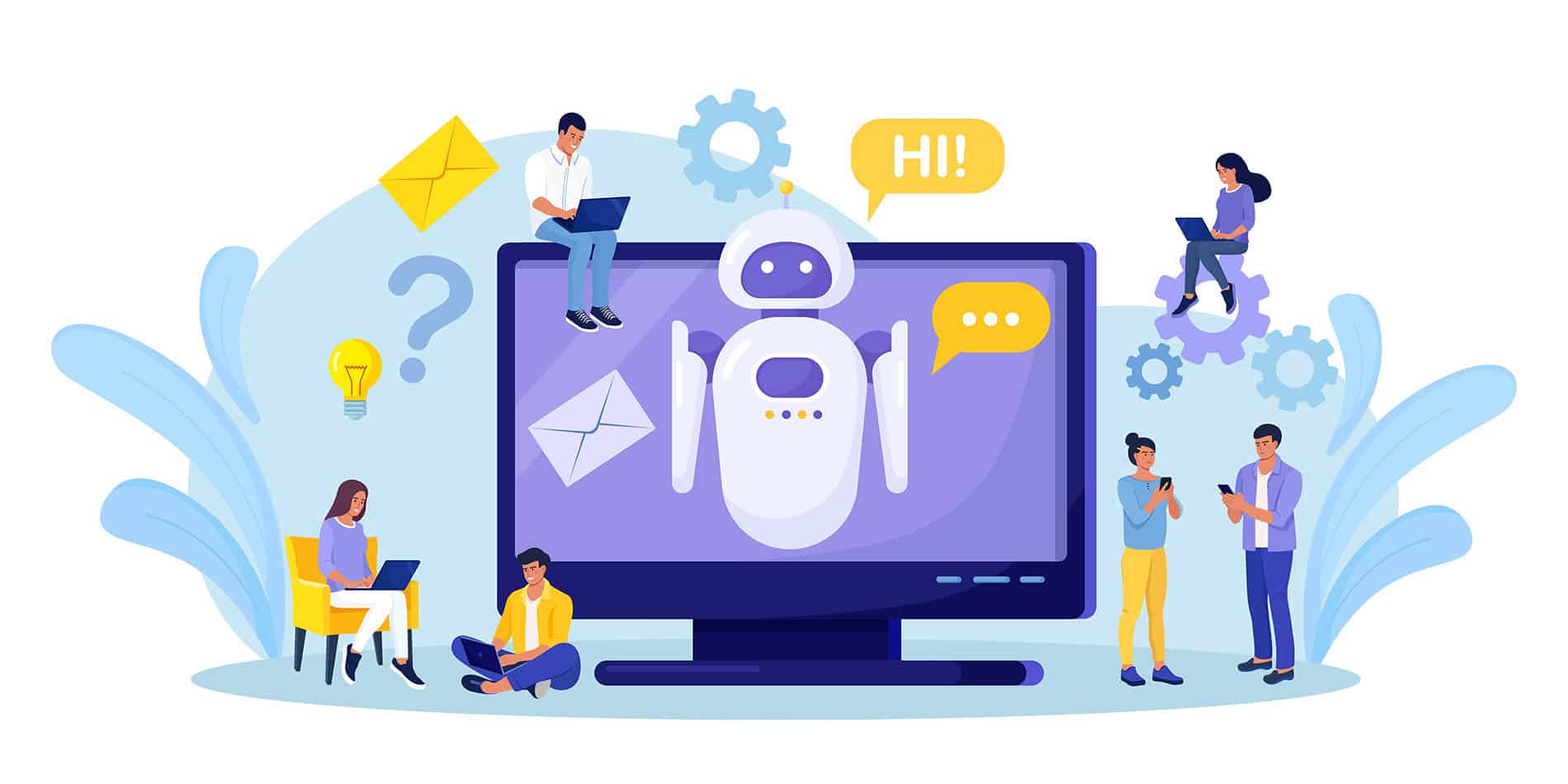Conversational AI chatbots are redefining the way businesses operate. But what exactly is a conversational AI chatbot? Unlike traditional chat methods that rely on pre-set responses, conversational AI chatbots utilize natural language processing and understand intent. While they do need to be trained, with conversational AI you can facilitate more complex conversations and resolve issues through actions vs. the traditional chatbot’s question/answer limited dialog path.
The Advantages of Conversational AI Over Traditional Chat
The primary benefit of a conversational AI chatbot lies in its ability to provide accurate, personalized responses to customers without any human intervention. Here’s how:
- Personalized Recommendations: By tapping into various data sources within the company, conversational AI can provide highly relevant recommendations tailored to each customer’s needs.
- 24/7 Convenience: Customers can access information anytime, anywhere, enhancing their overall service experience.
- Cost Efficiency: Businesses can significantly reduce operational costs by automating repetitive, time-consuming tasks.
According to a recent survey on conversational AI, there are four key elements for a successful chat experience when it comes to using conversational AI for self-service. The top cited element was a strong knowledge base for content to feed the chat, which was named by 75 percent of respondents. That was closely followed by the ability to personalize the conversation with details about the customer, named by 63 percent. Third and fourth place were ranked equally, named by 62 percent, who equally weighted the ability to present questions to the employee that drives dynamic content with the ability to automate the fulfillment of requests from the chat interaction.
Conversational AI especially benefits service management teams when paired with enterprise integration and automation (using iPaaS). This combination can elevate chat from a glorified knowledge base search engine into an automated, action-centered channel to field requests.
No matter how good the knowledge base, personalized user information can only be uncovered through the inherent ability to connect to business systems via APIs and integrations. This capability is what makes it possible to automatically provide dynamic content and fulfill simple, repetitive requests for action.
Boosting Self-Service Adoption with Conversational AI
In the digital age, self-service portals have become a necessity. Yet, many users struggle with navigating these platforms. In fact, many organizations face challenges in delivering an effective self-service experience due to:
- Poor user interface and navigation
- Outdated or irrelevant knowledge-base articles
- Lack of personalization and contextual understanding
- Inability to handle complex queries or escalate issues efficiently
- Time-consuming manual processes for ticket submission and resolution
These issues can lead to increased frustration for users and higher reliance on traditional support channels, negating the benefits of a self-service portal.
This is where conversational AI chatbots come into play. By placing a conversational AI chatbot on your self-service portal you get:
- Ease of Use – With intuitive interfaces and smart responses, conversational AI chatbots make it easy for users to find the information they need.
- Reduced Complexity – Conversational AI chatbots can break down complex processes into simple steps, making it easier for users to complete tasks.
- Improved User Experience – Conversational AI chatbots can offer real-time assistance, improving the overall user experience.
Let’s take a real-world example. An employee comes to the portal because they want to find out how much PTO they have. They start by asking the chatbot how much paid time off (PTO) they have left for the year. A first-generation chatbot may not be able to answer that, instead offering a link to the employee knowledge base article about how much PTO each employee gets annually.
A conversational AI chatbot tied to a well-connected integration and automation layer could personalize the response leveraging Single Sign-On, and then access the employee’s data from another application to deliver an accurate, fast response. In this case, the response may say, “Currently, you have 12 days of PTO left this year.” It might even follow up with a question like, “Do you want to know how many of these days will roll over next year?” or, “Would you like to request time off?” If the end-user response is to request time off, the solution would present a form for the request to be entered and then pass that data back to the PTO tracking platform.
Framingham State University (FSU) in Massachusetts uses a new AI chatbot on its self-service portal for students and employees. The chatbot is part of the university’s IT Service Management (ITSM) platform, TeamDynamix—and IT leaders expect it will lead to better, faster customer service while reducing the burden on IT staff.
With TeamDynamix you can benefit from a fully integrated platform and dynamic forms to help facilitate conversations and to pass data between the end-user and back-end systems.
“Having the TeamDynamix chatbot tied into other applications really makes it shine,” said Bill Shew, administration and student information systems coordinator for FSU’s Department of Information Technology Services.
“We’re trying to reduce the amount of time staff spend responding to requests that can be resolved through self-service,” Shew continued.
What if you could reduce 20-30% of ticket volume with self-service? What if you could automate the requests so that you never had to touch the ticket? From password resets to onboarding, this is now a reality.
“We’re extending our self-service capabilities for users,” Shew noted. “When they’re looking for information, they can just type in their question instead of looking for specific keywords on our self-service portal, and they can get an instant answer back.”
For example, for common IT questions that have a straightforward answer, the IT team has configured the bot to respond with the relevant information. If the instructions are too long or cumbersome for users to read within a chat window, the bot directs them to the appropriate knowledge base article with that information.
“It’s not much different from using the search option to find knowledge base articles,” Shew said, “but in my opinion, it allows us to fine-tune what people are looking for by aligning specific utterances to answers for a more accurate outcome. As an example, we have responses matched within the bot for things it doesn’t do. If you type in a question that has to do with advising, that’s not part of the IT service portal, so it simply tells the user how to contact the advising center.”
Implementing a conversational AI chatbot on your company’s self-service portal can bring about significant benefits. Not only does it enhance customer experience, but it also improves operational efficiency and reduces costs. So, why wait? Embrace conversational AI and transform your self-service portal today!
Want to learn more about traditional chat vs. conversational AI? Read our market study: State of Chatbots and Conversational AI.

